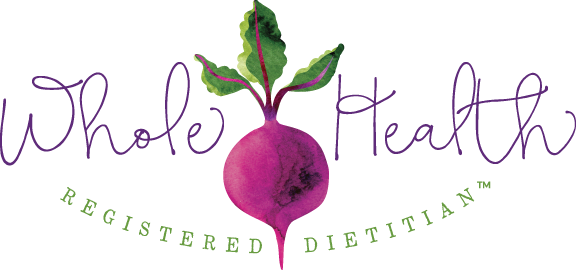First things first – let’s get this out of the way. I don’t have a lot of experience feeding children. I have a 2-year-old and a newborn. While the toddler seems to be in great health, she sits at the dinner table, and she eats a variety of foods, I know that at age 3, 4, and 5, things could change dramatically for us! And I know my second child could be quite different!
However, I do have a lot of experience researching feeding children. I worked for three years at a non-profit where I helped research and write reports on childhood obesity and child nutrition for the Federal Government. I had access to the sharpest, brightest minds in the child nutrition world. I’ve also learned a lot since then, through both counseling clients and families, and through reading and staying up-to-date on nutrition research. At the bottom of this post are my favorite resources on feeding your children.
In this post, I wanted to highlight a study from the 1920’s I stumbled upon recently. It attempts to answer the question, “What will babies eat if they’re given free choice?” It was a research study that would never be allowed to happen today. It’s been called “the world’s longest, most detailed, most ambitious food experiment.”
Fifteen children were observed over a period of 6 years. Every day, they were offered a selection of 34 different foods, and researchers noted what they chose to eat and how much they ate. Mealtimes were set up to prevent the staff from influencing what the babies ate.
When the children’s food choices were analyzed, they were very different from each other and from the standard diet of the time. But, when the diets were examined as a whole, they showed similar macronutrient intake (calories, proteins, carbohydrate and fats).
The children were very healthy during the study and were remarkably free of the common childhood diseases of the time. Constipation was unknown among the children in the study and any colds were mild. Five of the children had rickets at the start of the experiment, which resolved without medical treatment. One child with severe rickets actually spontaneously drank cod liver oil on his own! The children’s health was monitored by physical and biochemical examinations, and by X-rays of their bones. Apparently, the radiologist at the children’s hospital was very excited at the “beautiful calcification” of the bones on the children’s X rays.
Although some of the children were undernourished when they arrived, this evened out until there were no notably overweight or thin children. Remember: this was a result of letting the children eat according to their own fullness and satiety cues.
Check out the list of 34 whole foods they used in the study. Some might surprise you!
- Water
- Sweet milk
- Sour milk
- Sea salt
- Apples
- Bananas
- Orange juice
- Fresh pineapple
- Peaches
- Tomatoes
- Beets
- Carrots
- Peas
- Turnips
- Cauliflower
- Cabbage
- Spinach
- Potatoes
- Lettuce
- Oatmeal
- Wheat
- Corn meal
- Barley
- Ry-krisp
- Beef
- Lamb
- Bone marrow
- Bone jelly
- Chicken
- Sweetbreads
- Brains
- Liver
- Kidneys
- Fish (haddock)
Oatmeal, wheat, beef, bone marrow, eggs, carrots, peas, cabbage, and apples were served both raw and cooked.
I found it interesting that the children’s tastes changed unpredictably from time to time (hello picky toddlers!), and meals were often combinations of foods that were strange to us and would have been “a dietitian’s nightmare” (from the article). For example, a breakfast of a pint of orange juice and liver, and a supper of several eggs, bananas, and milk.

Another interesting result? All infants shared a low preference for all 10 vegetables, as well as for pineapple, peaches, liver, kidney, fish, and sea salt. These foods constituted less than 10% of the total calorie intake. This goes along with many feeding experts advice today to present vegetables, but to not force feed or bribe children to eat them.
In my practice (and in general day-to-day life!), I see a lot of parents worry about their child’s weight, that their kids aren’t eating vegetables, or that their children only eat a few foods. I see food restriction, and the misguided promotion of the idea that certain foods are “better” or healthier than others.
But this study, and much of research since then, proves that children can be trusted to eat what they need for good health and growth, as long as presented with a variety of whole foods. The key is to nurture and foster that intuition as much and as long as possible, to create adults with a healthy relationship with food and who know how to listen to and respond to their body’s cues.
Trust the instincts of your children. Their bodies are much smarter than YOUR mind.
References:
Results of the Self-Selection of Diets of Young Children, by Clara M. Davis, M.D.
Clara M. Davis and the wisdom of letting children choose their own diets, by Stephen Strauss
More resources on child feeding:
Ellyn Satter’s Division of Responsibility in Feeding
Child of Mine, by Ellyn Satter
Your Child’s Weight: Helping Without Harming, by Ellyn Satter
Food Ninjas: How to Raise Kids to be Lean, Mean, Eating Machines, by Matt Stone
Don’t Make Children Eat their Greens, by Tim Lott







Awesome post. The other day I gave Zacky steamed cauliflower at a restaurant and he said, “Mmm! Love it!” Cracked me up. What I want to know is…how the heck did they manage to feed these kids this arrangement EVERY DAY FOR SIX YEARS?! Did they live in a bubble?!
Thanks! That’s so cool re cauliflower! These kids were in an institution, making this experiment easy back then, but impossible now due to IRB laws.